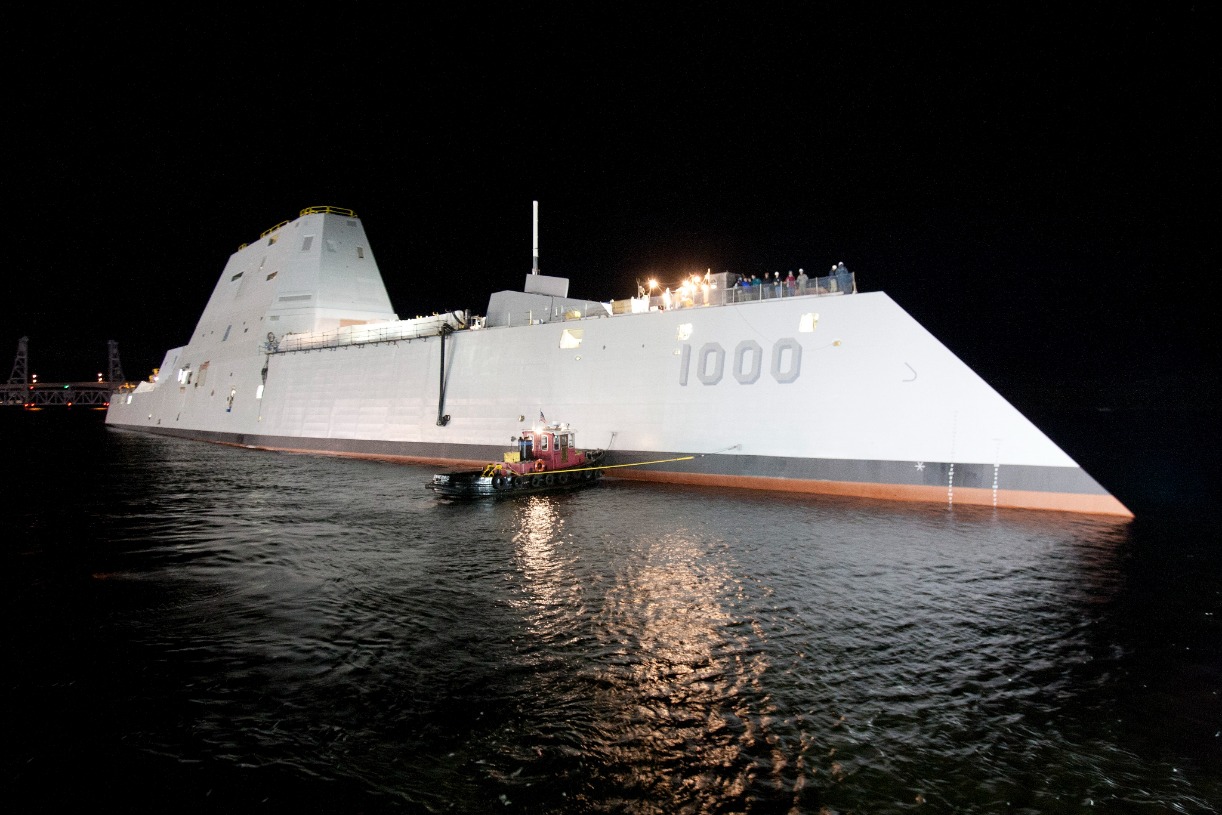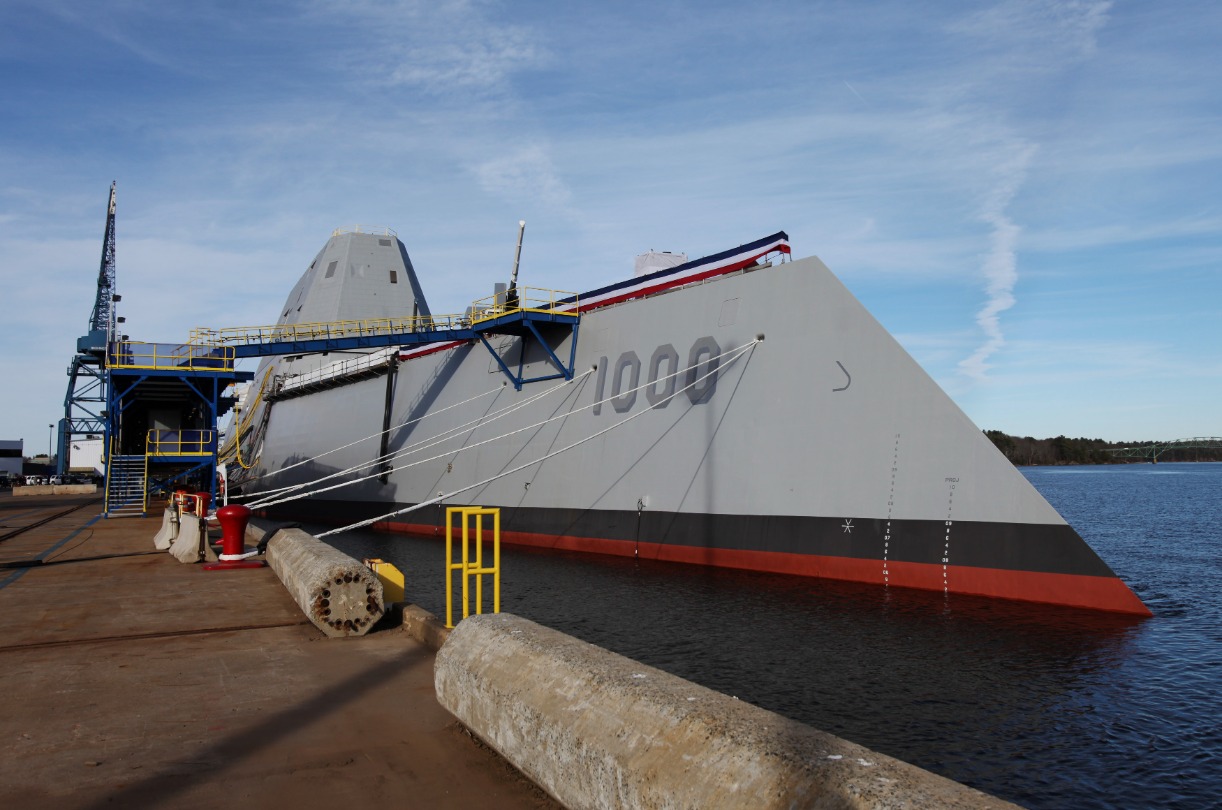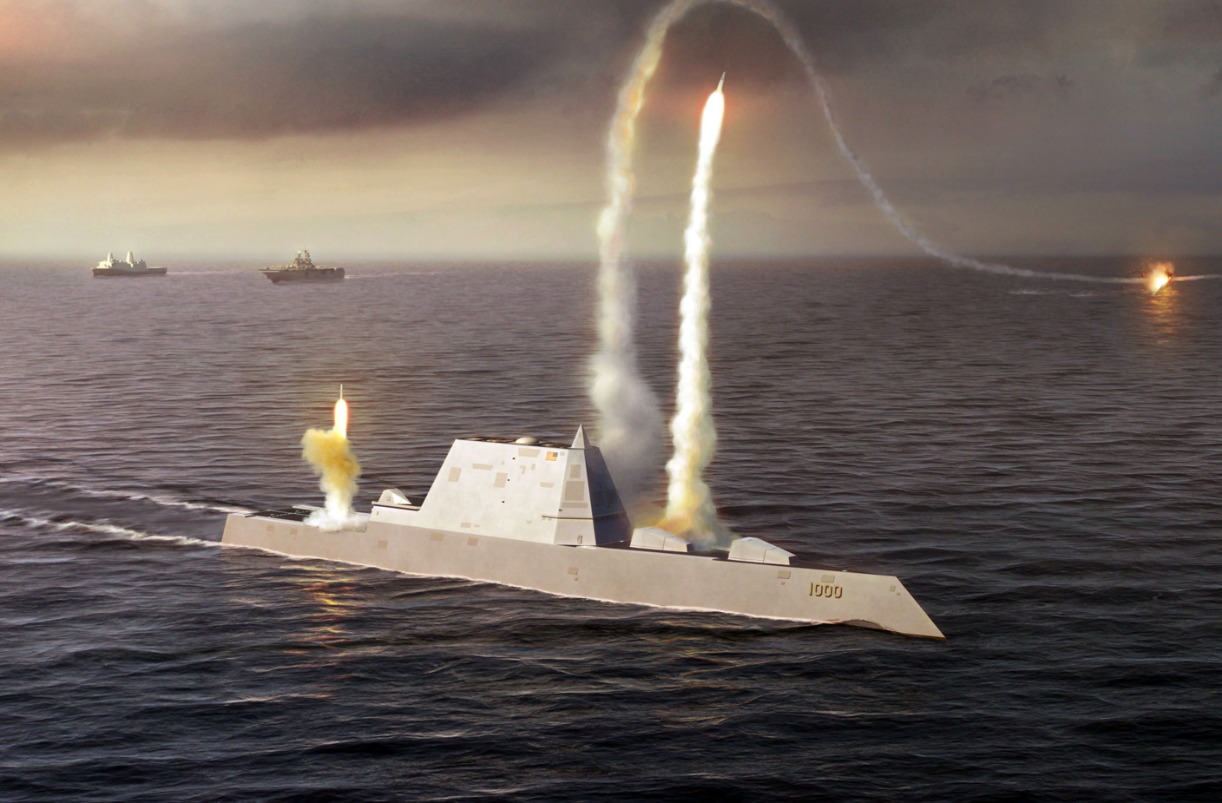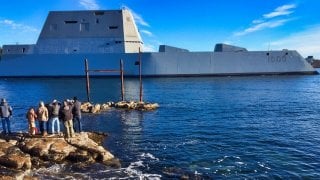Zumwalt-Class Destroyer Failure Can Be Summed up in 2 Words
The U.S. Navy’s Zumwalt-class destroyers, initially hailed as cutting-edge stealth warships, have faced severe operational issues and budget overruns, exemplifying flawed strategic priorities.
Total Disaster: The U.S. Navy’s Zumwalt-class destroyers, initially hailed as cutting-edge stealth warships, have faced severe operational issues and budget overruns, exemplifying flawed strategic priorities.

-With only three built out of an intended 32, these ships are plagued by exorbitant costs, broken armaments, and ineffective systems, underscoring the need for the Navy to refocus on practical assets like hypersonic weapons or expanding its submarine fleet.
-Critics argue that maintaining the Zumwalts in an age of budget constraints and global threats from China, Russia, and others is a wasteful choice, diverting resources from more relevant and reliable defense investments.
Why the Navy’s Zumwalt-Class Destroyers Are a Costly Failure
The Zumwalt-class destroyer, designed to revolutionize naval warfare with stealth capabilities and advanced armaments, has instead become a symbol of strategic misjudgment and wasteful spending. Initially envisioned as a fleet of 32, only three Zumwalts were built, each plagued by exorbitant costs and functionality issues. The main gun remains broken, and attempts to retrofit the destroyers with hypersonic weapons have proved equally problematic. Critics argue that funds spent on Zumwalt should have been directed toward more practical and reliable systems, such as expanding the Seawolf-class submarine fleet or advancing hypersonic weaponry earlier.
The US Navy’s refusal to innovate and rethink its long-time assumptions about what constitutes its power has been evident for decades since the Cold War ended. It was evident in the decision by Navy planners to not only continue building expensive aircraft carriers, but to build newer models of aircraft carriers that were far more expensive than the previous set. The Navy’s shortsightedness was apparent when it opted to build only three (out of a planned 30) of its Seawolf-class attack submarines. But nothing screams strategic ignorance and cultural decadence like Navy’s commitment to building the Zumwalt-class destroyer.

America’s first Zumwalt-class destroyer, the U.S.S. Zumwalt, was the costliest destroyer it had ever built—far surpassing the cost of the magnificent Arleigh Burke-class destroyer which still protects US Navy aircraft carrier battle groups. Three units of the Zumwalt were built, a small class of warships for sure.
They are also the largest destroyers in the world. Their distinctive hull design that makes them look like something from Babylon 5 and less like a US Navy warship is because they are the world’s first true stealth warships. These destroyers were so next-generation technologically that General Dynamics, the company that built the Zumwalt-class, had to spend $40 million just to build a special facility for these next-generation warships.
A Snapshot of 1990s America and the U.S. Navy
The Zumwalts were meant to be a complete break from the way things had been done by the US Navy. The warship produces the same amount of power as an aircraft carrier. It possesses 80 vertical launchers for various types of missiles. A key part of the Zumwalt’s mission was to be able to conduct deep-ranging sea-to-shore strikes. Remember, the Zumwalts were designed back when the United States was the undisputed unipolar power.
At that time, America was more concerned with rogue states, transnational terrorist groups, and the scourge of ethno-religious sectarian conflicts abroad. The Navy was constantly trying to keep itself relevant at that time and having a “multi-mission” stealth warship seemed like a worthwhile investment.

There was just one problem: the Zumwalt-class destroyer didn’t work as advertised. It took years longer to build and was around 50 percent more expensive than what the defense contractors had sold to Congress. Initially planned to have a fleet of 32 Zumwalts, today, the Navy has just three.
And they’re constantly needing repairs.
The armaments alone are egregiously expensive, partly because the supply chain was designed to provide cheaper armaments once the Zumwalt fleet reached its 32-unit goal. Since that goal will now never be met, the costs for the unique armaments for these warships will remain exorbitant. In the age of constrained budgets, this is not a worthwhile investment.
End The Madness Already on Zumwalt-Class
Besides, as it turns out, the main gun on the Zumwalt is broken and cannot be repaired. Rather than cut its losses, though, the Navy is insistent on trying to make the Zumwalt work. It’s getting rid of the 155-milimeter non-working Advanced Gun Systems (with its $800,000 per round ammunition). Instead, the Zumwalts will be fitted with the equally expensive, non-functional hypersonic weapons platform that the US Navy has been desperately trying to build. To be clear, investing in hypersonic weapons is a good move.
Unfortunately, these systems are clearly not ready for showtime (whereas Russia’s, sadly, are ready and China’s hypersonic weapons are right behind Russia’s). And deploying these boondoggles—which, according to some assessments, are not as stealthy as they were designed to be—is absurdly wasteful.
But the Zumwalt-class is another example of the kind of decadence at the Department of Defense and from Congress that I’ve been railing about. These warships were designed and deployed at a time when America could afford to indulge its wildest strategic fantasies. It was still basking in its Cold War victory, there were no serious challengers to American global primacy, and things at home were going well.
Those days are gone.
With China on the rise, Russia pushing hard against US-backed NATO, Iran agitating for a great regional war against American allies in Israel and the Sunni Arab states, and North Korea poised to go nuclear at any moment, the last thing the Navy should be doing is continuing to support the wasteful Zumwalt.
What Might Have Been…
Just imagine if, instead of trying to reinvent the wheel, the Navy planners simply stuck to the basics. Instead of blowing the $22.4 billion on researching and developing the Zumwalts, just imagine what would have been if the Navy invested in building up its unbelievably tiny fleet of Seawolf-class attack submarines.
Or if the Navy had invested in getting its hypersonic weapons ready for deployment years before they started taking the concept seriously. This isn’t hindsight, many were skeptical, for example, that the Navy’s investment into the Zumwalt-class was going to pay off.
Now the Navy is stuck with a sunk cost. It should cut its losses now. Instead, it seems to be doubling-down on failure.
Author Experience and Expertise: Brandon J. Weichert
Brandon J. Weichert, a National Interest national security analyst, is a former Congressional staffer and geopolitical analyst who is a contributor at The Washington Times, the Asia Times, and The-Pipeline. He is the author of Winning Space: How America Remains a Superpower, Biohacked: China’s Race to Control Life, and The Shadow War: Iran’s Quest for Supremacy. His next book, A Disaster of Our Own Making: How the West Lost Ukraine, is out now from Encounter Books. Weichert can be followed via Twitter @WeTheBrandon.
All images are Creative Commons or Shutterstock.
From the Vault
Russia Freaked Out: Why the U.S. Navy 'Unretired' the Iowa-Class Battleships
Battleship vs. Battlecruiser: Iowa-Class vs. Russia's Kirov-Class (Who Wins?)


